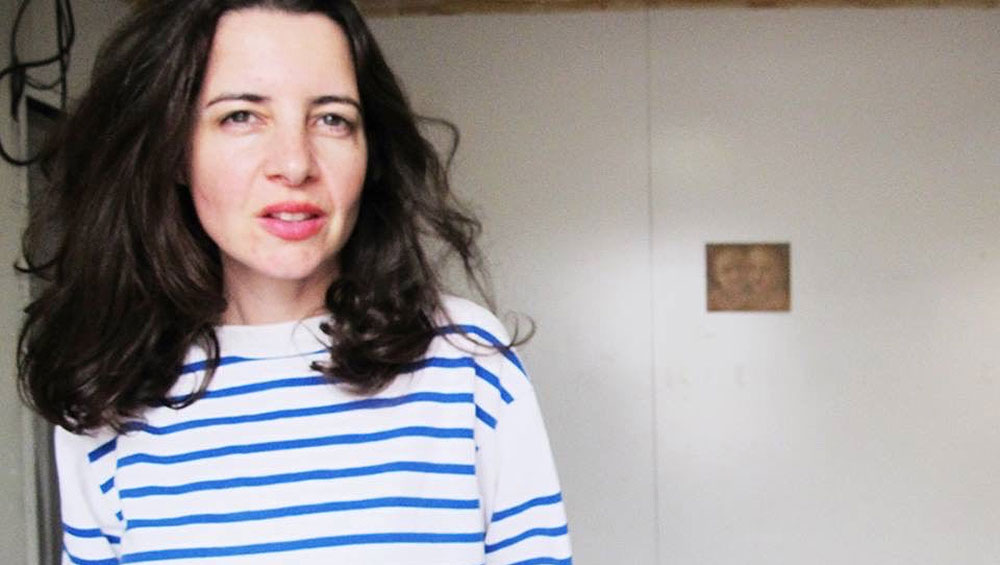
Chechu Álava. Photo courtesy the artist.
by CHRISTIANA SPENS
Chechu Álava’s latest solo exhibition, A Timeless Story, at the Cob Gallery in London, presents bewitching, ethereal oil paintings of important, but often previously erased, female painters and writers – such as the French artist Suzanne Valadon and the Russian poet Anna Akhmatova – as well as interpretations of iconic paintings by Edvard Munch and Botticelli. In her characteristic hazy, enigmatic style, she links these figures in a dream-like vision of female representation, treating the artists and characters as if they are artist’s saints, and thereby creating a revised system of iconography through which to learn, admire and reflect on one’s own life and artistic practice. Following on from two presentations of the same painting series in the last two years – The Restless Muses at BravinLee Programs in New York (2021) and Rebeldes (Rebels), a museum solo exhibition at the Thyssen-Bornemisza National Museum in Madrid (2020) – this exhibition marks the final installation in this trilogy, and her project to elevate the work and lives of female artists, writers and models who have been dismissed or forgotten.
-2021.jpg)
Chechu Álava. Artist and model (Lee Miller), 2021. Oil on linen, 55 x 46 cm. Image courtesy the artist.
Álava was born in Asturias, Spain in 1973. She has a BA in fine arts from the University of Salamanca. In 1995, she studied at the Gerrit Rietveld Academy in Amsterdam on an Erasmus scholarship. She now lives and works in Paris. Ahead of her exhibition at the Cob Gallery, she talked to Studio International about her intriguing, quietly radical works, and the ideas, people and experiences that inspired them.
Christiana Spens: Your work here is engaged in ideas of timelessness, traditions and the modern refiguring of history, especially where representations of women are concerned. Can you tell me a little bit about how you came to this key subject, and how your work for this exhibition has developed your ideas?
Chechu Álava: My journey as a painter has not been a straight chronological line. When I studied fine arts in Spain in the 90s, abstract expressionism predominated. It was also a very masculine context, with mostly male professors and hardly any female references. When I studied in Amsterdam in 1995, I began to discover the work of female artists such as Ana Mendieta, Kiki Smith, Cindy Sherman and Marina Abramović. Although I have flirted with performance, photography and other media, the language that speaks to me is eminently pictorial, and my nature is pictorial.
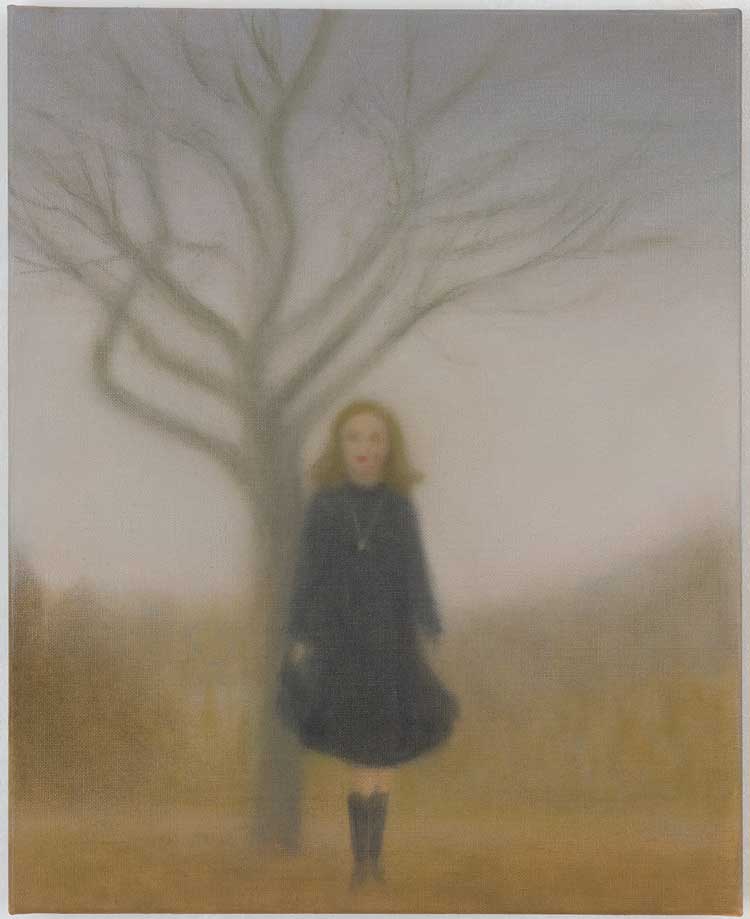
Chechu Álava. Clarice Lispector and a tree, 2021. Oil on linen, 41 x 33 cm. Image courtesy the artist.
Within painting, I went through more abstract and expressionist stages, then more pop and even conceptual … But when I arrived in Paris in 2001, I began to feel the need to really learn the craft. As I visited museums, I started to look further back into the 20th century, into the history of painting, and to learn to paint in layers and so on. This would be a summary of the process of several years. In a natural way, art history and my interest in gender issues mixed together.
The history of painting cannot be ignored. For me, it is an inexhaustible form of pleasure and knowledge. I always say that we painters are like relay runners who pass the baton to each other to continue the race. I feel that I do not paint from nothing, but that I am recovering an inheritance, a legacy, and I feel a great honour for it, with a lot of respect, responsibility and joy.
For this exhibition, I continued the line of work that has almost unintentionally become a small trilogy, with the solo exhibition Rebeldes at the Thyssen-Bornemisza Museum in Madrid in early 2020, followed by The Restless Muses at BravinLee Programs in New York in 2021, and now A Timeless Story at Cob Gallery, London. The title of this exhibition, A Timeless Story, refers to my completely timeless relationship with the history of painting (I experience the same emotion in front of a work from one century or another and I also consider great themes to be inexhaustible and ageless). And it also refers to the history of women.
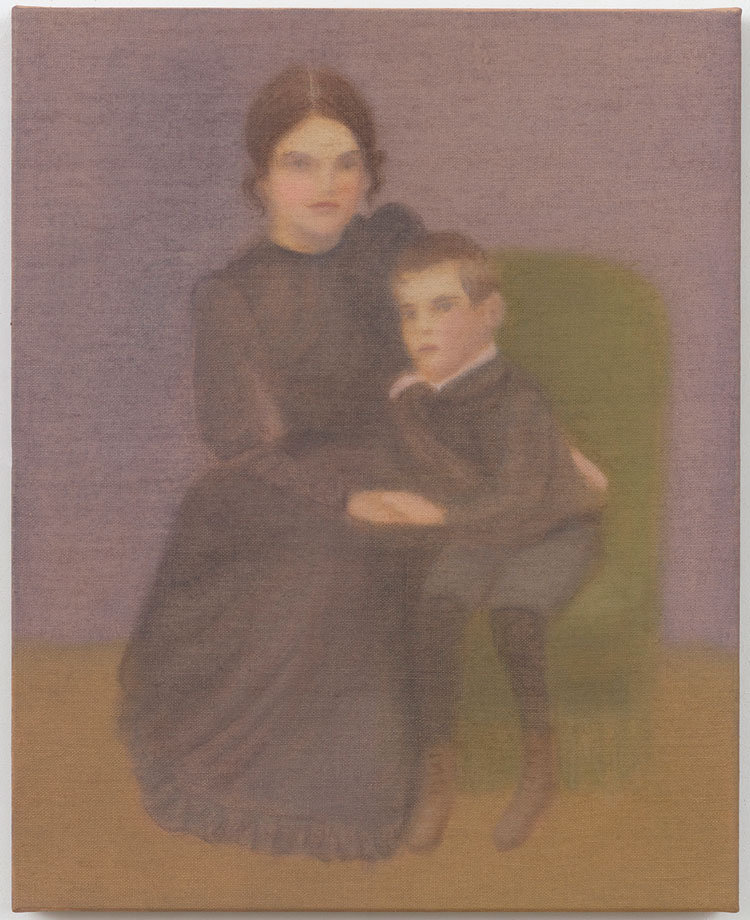
Chechu Álava. Suzanne Valadon and her son Maurice Utrillo, 2021. Oil on linen, 41 x 33 cm. Image courtesy the artist.
CS: You have painted works featuring the model and painter Suzanne Valadon and her son, Maurice Utrillo, who was also an artist. When did you first come across Valadon’s work (and her story) and, in painting her together with her son, what were you trying to elucidate about the mother-child relationship and theirs in particular?
CA: I discovered Suzanne Valadon’s work in Paris years ago, and I was very struck by visiting her studio house and the view of the garden from her windows. You can almost still feel her presence. That photograph of her with her son was very moving, too. I think that since I am a mother myself (I have twin daughters, aged seven), motherhood is a subject that seems to me very profound, with all its contradictions. That unconditional love is an unfathomable mystery, and it takes you into an abyss of existence. The struggle to be a mother and an artist at the same time also affects me. On the other hand, for some time now, I have been in the habit of invoking the help of other artists who are dead (as Catholics do with their saints). And Suzanne is a great reference for me. If I need to be strong and brave, I ask her. She is one of my guides! I admire her work very much.
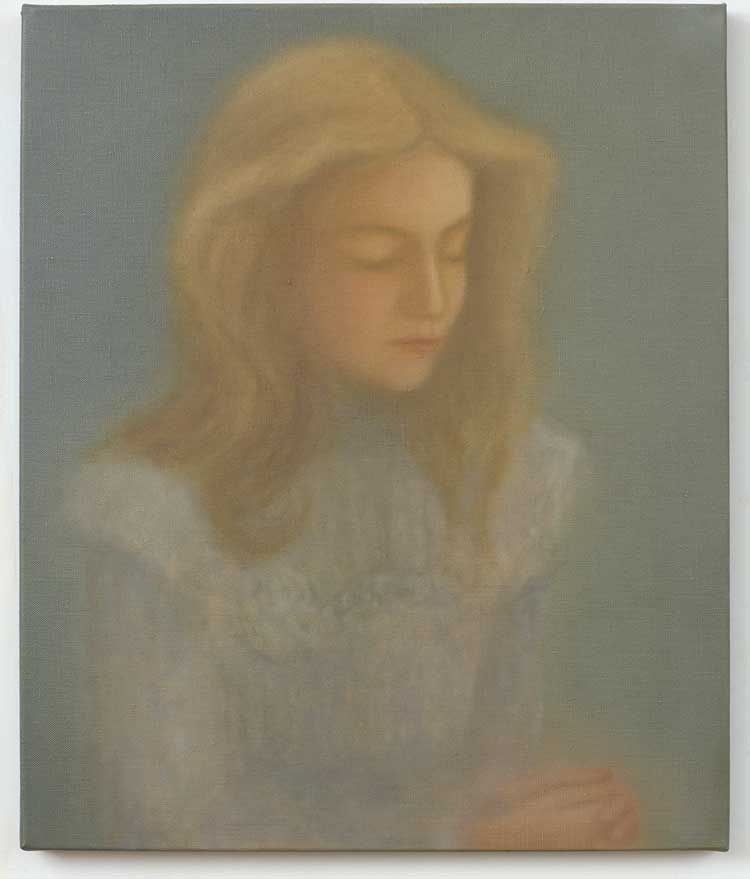
Chechu Álava. Girl Praying, 2021. Oil on linen, 55 x 46 cm. Image courtesy the artist.
CS: Paintings of women have traditionally been informed and defined by ideas of male desire, and Valadon was an important figure in presenting her own “female gaze” and reclaiming the female nude in her work, having already worked as an artists’ model. In your work, in which you turn your gaze to these important female artists and writers, how do you experience and convey alternate ideas? How do you hope this will change others’ perceptions of these women and women in general?
CA: I admire Valadon’s way of representing women. It has that compassion and empathy that also characterises Alice Neel’s work. I also greatly appreciate all the pioneering women who went against the tide not only with their own lives, but also with their own work. The idea of the artist-model also interests me because I posed as a model for a year at an art school in order to pay for my own studio and to be able to paint. That journey back and forth, artist-model, artist-mother … it’s like crossing borders. Sometimes, as a foreigner (I am Spanish and have been living in Paris for 20 years) you experience a certain uprooting. As an artist-mother, you also have to change language between home, the playground and the studio.
I don’t know if my work, on the other hand, will change others’ perceptions. The impulse to make it is a strong inner need. I paint from what I am. What I can perhaps achieve is that, by honouring their memory, by presenting these women with all my love for them, they will not be forgotten, as they have been for many centuries until very recently. And that the next generation of girls will not be like me, who had no female role models. Having role models is very important to feeling capable of achieving something. The patriarchy also functioned by erasing all women from history.
CS: You have spoken about aiming to capture “essence rather than appearance” in using the technique where the figures are hazy and dreamlike. Can you take me through your process of building these portraits, from finding photographs and other images, perhaps, to these final, interconnected works?
CA: The construction of a painting is quite mysterious. It doesn’t always turn out well. I resemble a witch performing alchemy and failing many times. A key tool is intuition. I collect images from everywhere – from the internet, or photos I take myself. The first step is to feel that punch in the stomach that tells you that an image can be painted. Sometimes, the images are a kind of Frankenstein, the head from one photo, the arms from another … and, from there, a painting is born. Other times, they are more faithful to the original photograph. When I say that I’m more interested in the essence than the appearance, it’s because behind the physical aspect there is something ineffable, but that we can try to glimpse. Maybe that’s what the poetry, music or art always tries to achieve – at least to catch a ray of that light. I don’t pretend to be a machine that photographs “reality”. (What “reality” is, how it is ungraspable and that the mere fact of observing it – as quantum physics says – already transforms it would be enough for a whole article.)
As for the formal questions or the technique, I paint just as I am, just as a singer can be a soprano and another a contralto. It is not calculated or programmed.
-2020.jpg)
Chechu Álava. Confinement (after Munch), 2020. Oil on canvas, 116 x 89 cm. Image courtesy the artist.
CS: In their desire to write and make art, all these women wrestled with patriarchal assumptions about the correct “role of women”. Society has progressed in some ways, but what do you think remains problematic and difficult for women making art today?
CA: I had the greatest difficulties as a female artist when I became a mother. In fact, having twin daughters, I couldn’t paint for the first two years – and I couldn’t sleep either! Patriarchy and liberal capitalism go hand in hand. They feed off each other. This infernal rhythm of life affects everyone, but women much more. In reality, a paradigm shift is needed. I imagine a different kind of society, where everyone develops their gifts and talents (each person has his or her own, all talents are important). It would be a happy society.
CS: Can you tell me about the painting of Anna Akhmatova and her friend and lover, the cabaret actress Olga Glébova-Soudeïkina. How did you come across her work, and then this photograph? Why is it important that their story and work is given this new focus?
CA: The way I found the images is very curious. I was reading the poet Anna Akhmatova and I looked for pictures of her. You know she was very charismatic and was also Modigliani’s muse. But these stories of sublime characters never end. Pulling on the thread always brings up more. And that photo appeared with Olga (I didn’t know who she was), who was herself an insubordinate woman, talented and with a life lived against the tide. I felt as if I were being led by the hand, or as if I were following the trail of breadcrumbs, as in the tale of Hansel and Gretel. So, I painted them together. The viewer will then make their own enquiries. I’m not going to present spoilers. In any case, I often find an image that grabs me, and I discover the story afterwards, it’s the power of the visual. When something has force, it is already seen in the image, independently.
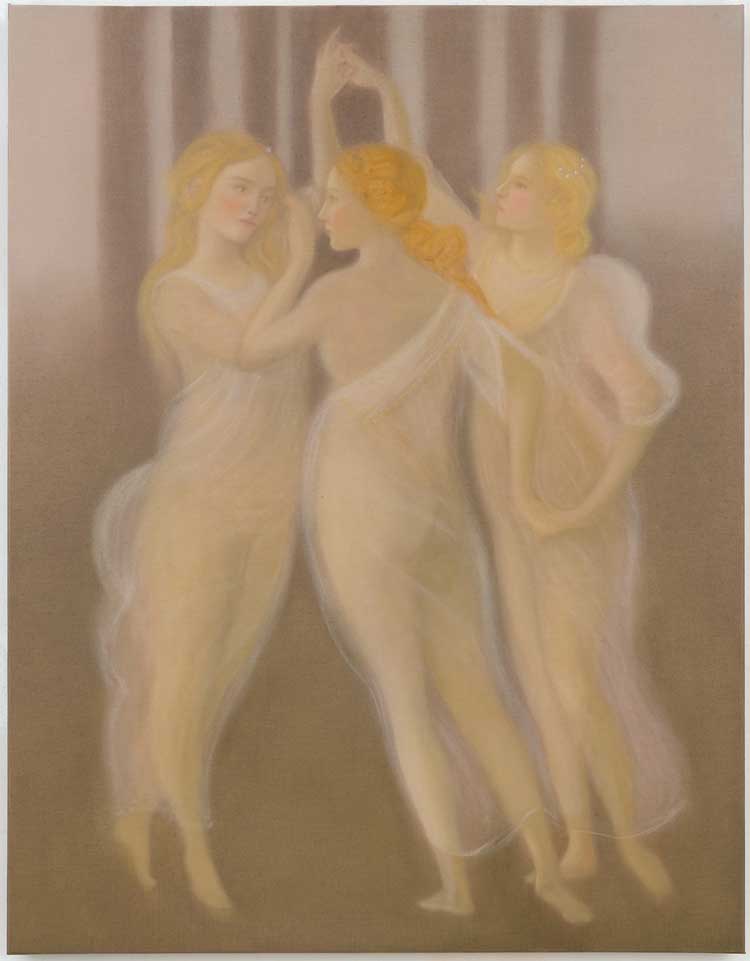
Chechu Álava. Profane and Sacred, 2021. Oil on linen, 116 x 89 cm. Image courtesy the artist.
CS: You reinterpret Botticelli’s The Three Graces (in Sacred and Profane), and Edvard Munch’s Puberty (in Confinement After Munch); why did you choose these paintings in particular, and did the experience of painting your works change how you felt or thought about them?
CA: Sometimes, I do versions of paintings from art history, and I always learn a lot. I often say it’s like when a musician covers a song. It’s my little tribute. I have to start from a work that I love and that seduces me. My way of living art, which is mixed with my life, means that in my studio or in the exhibitions I do, historical paintings can coexist with portraits of other people.
Confinement (After Munch) was painted during my first confinement in 2020. When I could no longer bear being locked up in our small flat, I escaped and walked alone to my studio, through the lonely streets of Paris. I needed to paint this painting by Munch, which for me reflected the state of our society, vulnerable, fragile, in a time of transition, like adolescence.
I also like Botticelli’s work for its refinement and delicacy. In the Louvre Museum, there are some frescoes with bits of paint missing that have always amazed me. My aim is quite humble, to learn from them, on a pictorial level. Then, inevitably, there is always my own voice, my own grammar. And my voice is that of a woman, it has its own vision of the erotic, of the beautiful.
I'm not a good copyist in general … I wouldn’t be good at forging paintings! It’s just something else that I do.
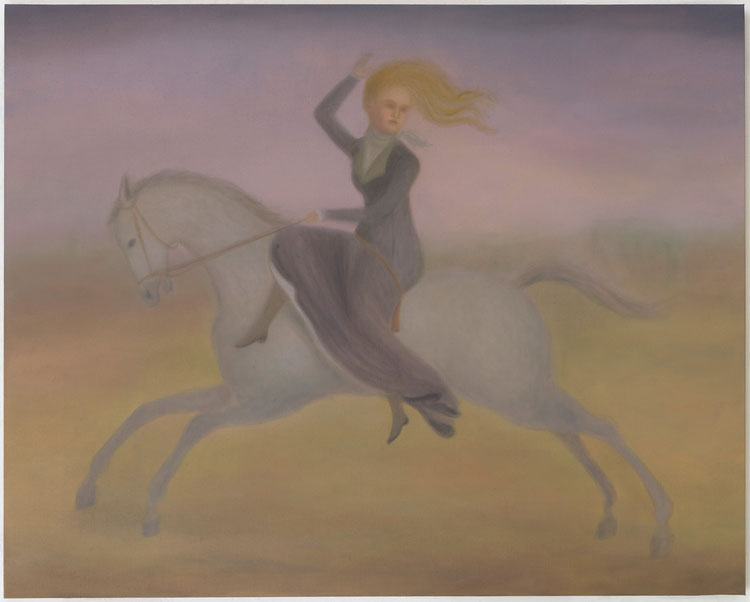
Chechu Álava. Taming emotions, 2021. Oil on linen, 130 x 162 cm. Image courtesy the artist.
CS: Can (visual) beauty ever be detached from the male gaze, and wider patriarchal structures that influence how we define and experience beauty? Do you think women have internalised the male gaze, and how might that be diverted or interrupted?
CA: It is a complex issue. For me the notion of beauty is increasingly important. I think it is another of the great mysteries of humanity, like goodness or truth. The 20th century has been quite unfair to beauty in general, and too much ugliness has arisen. But Beauty (with capital letters) is something inherent to the needs of human beings. Another issue is the canons of feminine beauty, that terrible slavery, another way of domination. But if we think of beauty in relation to nature, or to music, there is no gender there. Beauty is something vast. Surely beauty is linked to the perception of the transcendent, something that has also been unfairly treated and generated a huge misunderstanding.
Beauty can have many canons, but when it is authentic, it crosses borders, and it is perceived in all continents and periods of history. Asian, Indian, African art … When I go to museums and look at these millenary objects in vitrines, there is something there that goes beyond language, that is not merely cultural, and that is why it is timeless.
-2021.jpg)
Chechu Álava. The writer's table (Virginia Woolf), 2021. Oil on linen, 55 x 46 cm. Image courtesy the artist.
CS: To what extent do these paintings also serve as a sort of autobiographical project of your own, whereby you tell stories and express ideas from your life through the lens of history of art and portraiture of others?
CA: That’s completely what happens. One is always representing oneself. Paintings are mirrors in which the artist is reflected, but also the spectator who observes them. My private and personal history is mixed with my love for art history and, without being literal, I’m talking about myself, of course. All those portraits are actually self-portraits: they don’t have my features, but they express my very inner self. Moreover, the empathy I feel for these women, for example, makes me perceive them as part of me, as my older sisters. I talk to them when I come to the studio: they help me by their example. I don’t distinguish between the living and the dead, we are all different sides of the same prism.
• Chechu Alava: A Timeless Story is at the Cob Gallery, London, until 5 March 2022.